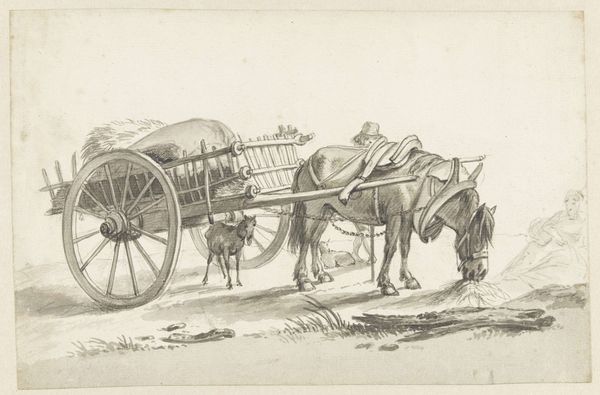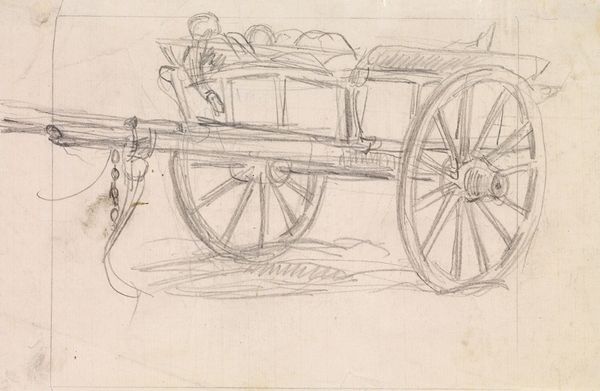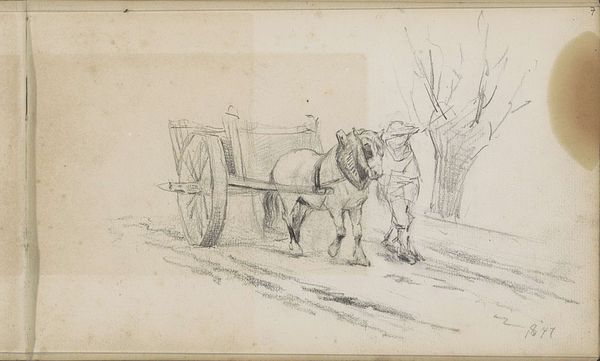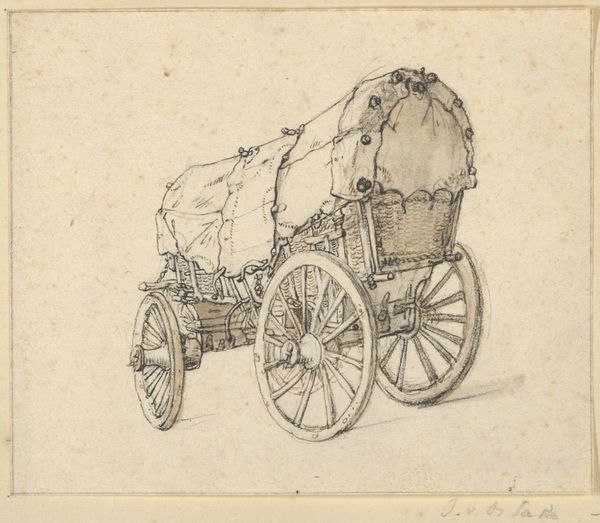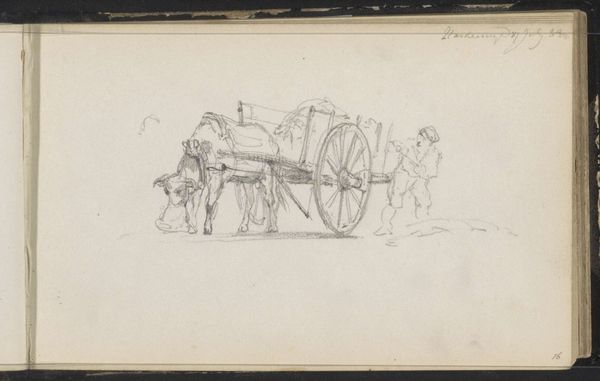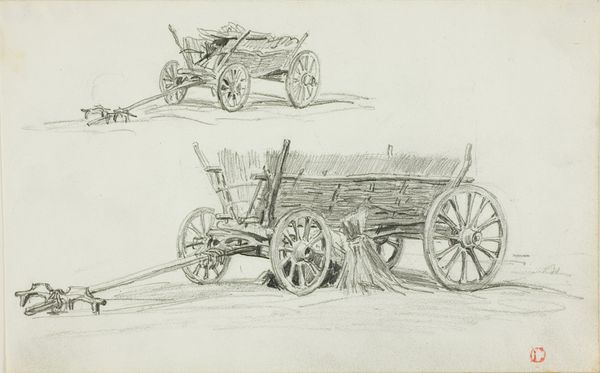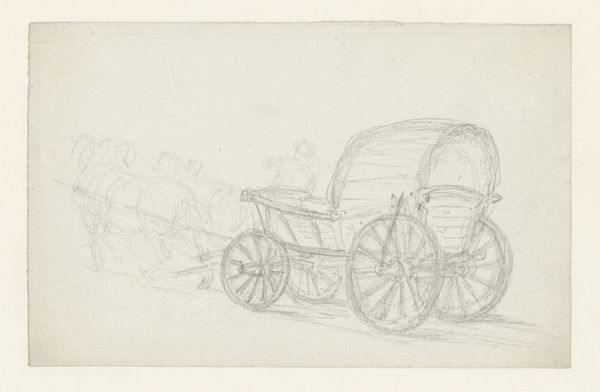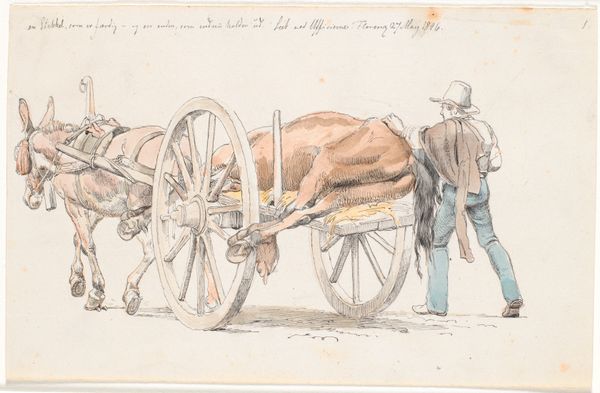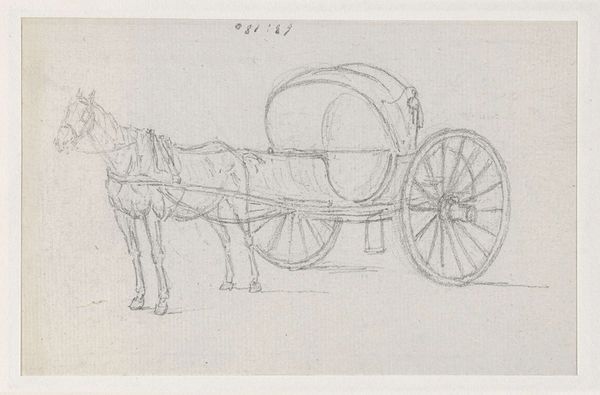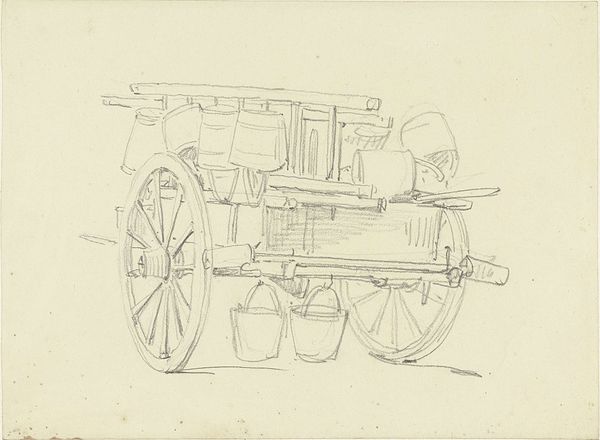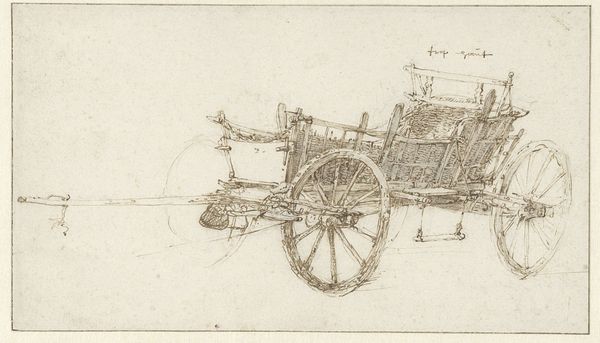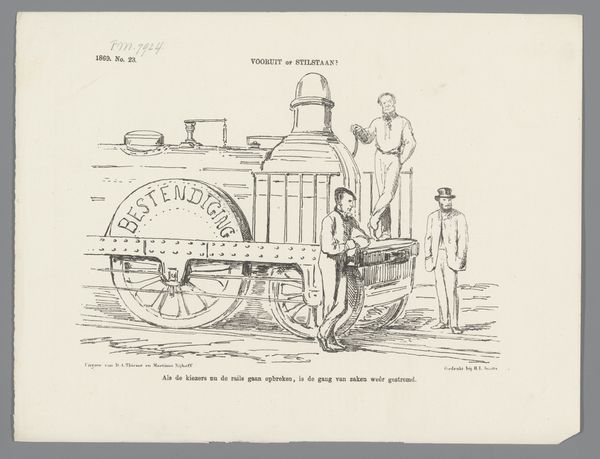
drawing, pencil
#
drawing
#
light pencil work
#
quirky sketch
#
pen sketch
#
pencil sketch
#
landscape
#
personal sketchbook
#
idea generation sketch
#
ink drawing experimentation
#
romanticism
#
pen-ink sketch
#
pencil
#
sketchbook drawing
#
genre-painting
#
sketchbook art
#
realism
Copyright: Rijks Museum: Open Domain
Curator: This is Johannes Tavenraat’s "Huifkar op de weg tussen Brussel en Parijs," a drawing created in 1840. Editor: My first thought? It’s incredibly delicate. The artist's pencil work captures the simple lines of the cart against the barely suggested landscape in such a charmingly direct manner. Curator: Right, and what strikes me is how this work offers a glimpse into 19th-century modes of transport, before the industrial revolution truly transformed Europe. We're seeing the tools and conveyances shaping daily life in very tangible ways. This drawing feels incredibly "of its time," you know? Editor: Absolutely, but let's also consider Tavenraat’s process. It’s a pencil drawing – modest materials for an era embracing both Romanticism and early Realism. This makes me think about his studio, or even being outdoors... Was he more invested in capturing the "real," quotidian nature of that particular kind of transportation? What do we know about how ordinary people related to this scenery? Curator: I believe it served as more than just transport: carts like this would have functioned as mobile workspaces for artisans, peddlers, and traveling performers, who brought social interactions and cultural diffusion to rural areas. This sketch, which could easily be overlooked as minor, suddenly offers insight into how labor and culture mingled outside urban centers. Editor: The fragility of the medium emphasizes its temporary state. Sketches were also an important aspect of art creation back then and helped visualize travel during Romanticism when this sketch was made. These small, personal artworks were shown to family members, displayed inside private homes, or saved to remember memories while the Industrial Revolution began changing this type of production. Curator: Indeed. Considering that Tavenraat's oeuvre consists of similar landscape drawings and sketches, this piece invites us to value this imagery for what it depicts, but also the act of observing, noting, and representing daily realities and shifting practices in the 1840s. Editor: A truly valuable observation that enables us to value an artwork such as this for its aesthetic quality but also the context it reveals through modest means and humble representation. Curator: Thank you. I am glad we came together to consider it from these combined views.
Comments
No comments
Be the first to comment and join the conversation on the ultimate creative platform.

